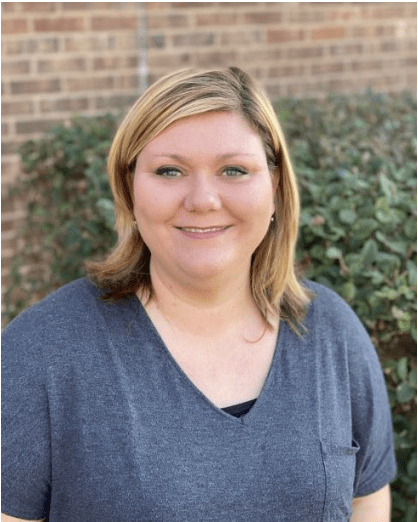2020 STEM Scholar Award Winners
Congratulations!
2020 Georgia STEM Scholars
Thank you for joining GYSTC as we honor 26 recipients of our coveted 2020 Georgia STEM Scholar Awards. This outstanding group of educators was chosen for their thoughtful engagement with their students which, over the last year, resulted in imaginative classroom lessons that taught and support science, technology, engineering and math (STEM) education. As parents, employers and citizens we hope all our teachers are competent, enthusiastic and caring. Our awardees certainly meet and exceed these basic criteria. But what sets them apart and what they are being cited for in these awards are two key factors.
First, they have shown a special aptitude for identifying the unique strengths and potential of their students and have conceived and executed classroom lessons that tap that promise. They have engaged and excited their students’ capacity to learn and build confidence – not only in their ability to master STEM, but to master lessons of successful living.
Second, our recipients also launched student projects whose impact reached past the classroom to involve their entire school community, parents, colleagues, and regional leaders who are STEM professionals and supporters. The far-reaching nature of these efforts in the case of one of our awardees led to recognition on the floor of the U.S. Senate!
Our recipients are winners! Winners for their students. Winners for their communities. Winners for our state, and winners for the teaching profession. They exemplify everything we want and hope our teachers will be. It is our duty and delight to honor them!
Congratulations,
Betsy Green
GYSTC Executive Director

Ms. Tiffany Coleman
Ben Hill County Schools, Ben Hill Primary School
“Out of the Woods”
STEM Classroom Lesson
“Camp Out With Learning” challenged students to create an edible tent using simple foods and classroom supplies. The fun STEM project was followed by a lesson in coding using LEGOS to code a path to get campers through the woods. It was a beginning exercise in logical, critical and computational thinking. Students ended the lesson by making their own flashlights using craft sticks, tin foil, batteries and mini LED lights.
Impact Initiative
Tiffany met the challenge to introduce STEM, STEAM and coding to her school community which had no prior exposure. She began by introducing and integrating STEM concepts to her 2nd grade class, then sharing her integration techniques with other teachers. After three years of developing STEM, Tiffany is now the “Smart Lab” teacher who continues to respond to student STEM needs and fosters new initiatives with enthusiasm and success.
Ms. Amanda Shafer
Brooks County Schools, Brooks County Middle School
“Young Sherlocks”
STEM Classroom Lesson
Students were presented with a fictitious murder to solve, but used real investigative techniques from the FBI and Crime Scene Investigation Units of local law enforcement to solve their case. They collected and examined evidence, evaluated its value, then drew conclusions based on science, probability and science-based deduction. Result: After several days of sleuthing the perpetrator was caught and the crime was solved!
Impact Initiative
Amanda was instrumental on the STEM STEAM TEAM which helped get her school STEM Certified. She also led creation of the TIGER TERRACE – an urban garden project comprising compost bins, raised beds and a greenhouse made of recycled materials. Children and staff alike learned gardening basics, environmental responsibility and teamwork. Green thumbs up!
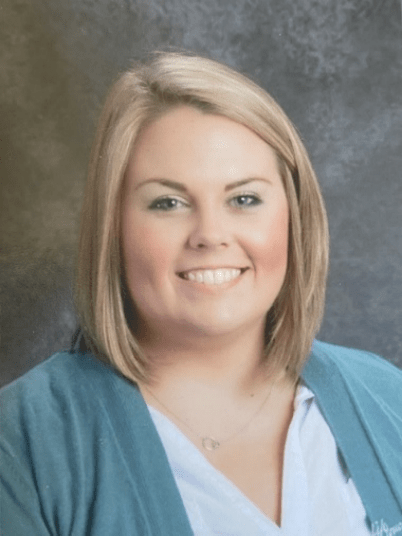

Dr. Manda Campbell
Carroll County Schools, Providence Elementary School
“Glass Inspired”
STEM Classroom Lesson
Students were exposed to and intensely studied the glass art sculptures of noted artist Chihuly. They observed the intricacies of his glass blowing techniques then tried to simulate his craft to design an art sculpture for the school garden. They used recycled plastic bottles to paint, cut and suspend their creations in an attractive display. STEAM works!
Impact Initiative
Manda joined a team of teachers to complete course work in preparation for National STEM Certification for their school. After completing certification, the development of solid STEM lesson plans, collaboration with colleagues, cooperation among the entire school community, creativity and critical thinking increased dramatically.
Ms. Jennifer Carroll
Carroll County Schools, Roopville Elementary School
“Strawberry Fields Forever”
STEM Classroom Lesson
Second grade students planted strawberries at school to observe the parts and life cycle of an edible plant. They followed the patch’s growth and when the plants matured each student was given a cutting to plant at home, care for and enjoy the delicious results with their family.
Impact Initiative
Jennifer’s class participated in West GYSTC’s and Southwire Corporation’s Solarize-A-Classroom project. K-5 students learned how the sun can power their classroom and their homes. Students documented weather patterns, charted their findings then compared results if the solar panels positions were shifted. The project operated out of a mobile trailer that will move to other schools in the region to conduct the same process. Solarize-A-Classroom is aligned with the Georgia Standards of Excellence in Science with Jennifer providing professional training on her experience with her teaching colleagues.
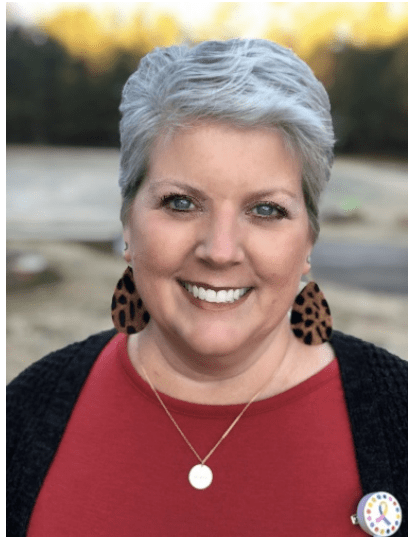

Ms. Annette Perkins
Carrollton City Schools, Carrollton Elementary School
“Farm to Table”
STEM Classroom Lesson
Students planted three gardens using internet programs to design, propagate and harvest leafy green vegetables that were served in the school cafeteria. The project taught various gardening methods, growth measurements, plant cultivation and journaling of the project’s progress and results.
Impact Initiative
Annette organized and managed the CREEK EXPO at Buffalo Creek. This initiative assembled professional naturalists, engineers, biologists, geologists and other water preservation experts from around the region to get K-12 students back to nature to explore and appreciate the importance of water conservation.
Ms. Ashley Soulsby
Carrollton City Schools, Carrollton Junior High School
“Velocity Values”
STEM Classroom Lesson
Middle school students measured speed, velocity and acceleration standards of the water flow in a local stream. They worked in groups to observe, collect and record data in two separate experiments, then compared results. Students learned that the methods they used involved multiple STEM disciplines that can be applied not only in water flow observation, but in other real world applications as well.
Impact Initiative
Ashley devised an avenue to turn her students’ love of computer gaming into a broader purpose that might turn their passion into future careers. She started an eSports Club that challenged youngsters to develop new games and competitive game exercises. In so doing, students gained exposure and expertise in coding, computer technologies and related STEM disciplines while staying fully immersed in an activity they loved.

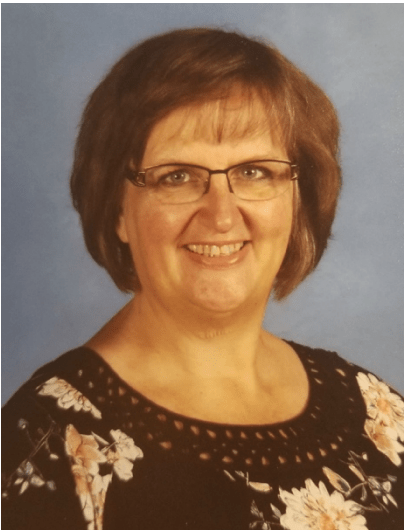
Ms. Karen Garland
Cherokee County Schools, Clark Creek Elementary STEM Academy
“Pantry Pride”
STEM Classroom Lesson
Out of an abundance of concern that their school pantry would remain full of garden produce during the winter months, students were asked to use STEM skills to build sheltering structures where plants would thrive in colder temperatures. They designed hoop houses, cloches, row covers and other unique designs. Along the way, they also learned teamwork, empathy for a good cause and the usefulness of STEM in producing edible results!
Impact Initiative
Karen annually coordinates multiple STEM initiatives for her school that have wide appeal. She leads the Science Olympiad Team, Cloverbuds Garden Club, Science Club and s quarterly STEM Home Challenge where students brainstorm STEM solutions to seasonal challenges with their families. But her most impactful initiative may be the always well attended STEM Career Day where each grade level is introduced to STEM careers by area professionals. The objective is to raise interest at an early age while helping students make linkages to real professions through lessons learned in the classroom.
Ms. Reshawndra Hutchins-Trapp
Clayton County Schools, Elite Scholars Academy
“Impact Injuries”
STEM Classroom Lesson
The subject of football concussions intrigued 7th grade students who had heard the word “concussion,” but had no real concept of its potential consequences for its victims. An egg was used to illustrate the fragility of the human brain and connect an everyday kitchen food to a science example. Students linked the physics of an egg dropping with biological issues of concussion and other types of head trauma. The lesson also exposed students to potential future careers in STEM like medical illustrator and statistician.
Impact Initiative
Rashawndra created a STEM Super Heroes Club in which high school and college students who she once taught now mentor her current middle schoolers in coding, science research and the county Science Olympiad program. Working with the Girls Who Code program has encouraged young women to become excited about coding. Overall, her students are seeing STEM as a viable career path resulting in increased interest and participation in the annual science fair and other STEM activities.
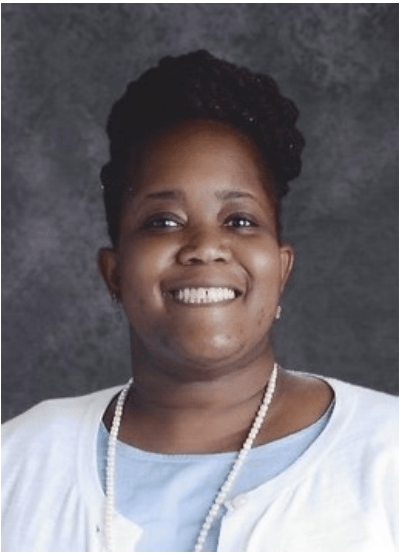
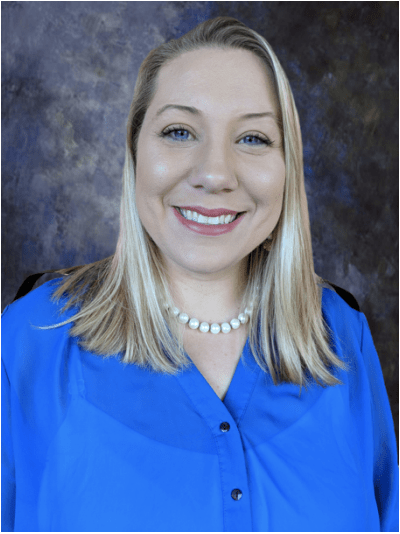
Ms. Ashley Pitts
Colquitt County Schools, Doerun Elementary School
“Pursuing Pollinators”
STEM Classroom Lesson
Multiple STEM lessons were learned by students who constructed a pollinator garden to save endangered bees. Along with the bees, an unexpected bonus was the appearance of hummingbirds, butterflies and other species attracted to the brightly colored flora the students planted. By using various STEM applications to measure and build, monitor and maintain the garden, students created a pollinators’ paradise that ensures the life and vitality for bees and their friends for years to come.
Impact Initiative
Ashley challenged her students to set their brains to “fix” or “flex” when surveyed and assigned a six-week engineering experiment. The students’ initial thoughts about their individual prospects for success or failure were drastically altered by the end of the exercise. The challenge proved that a positive mindset and a firm can-do attitude is critically important to successful outcomes. The results provided a useful lesson for the entire school community.
Mr. David Phillips
Columbia County Schools, Greenbrier Middle School
“Rocket Girls”
STEM Classroom Lesson
Students were given a complex challenge to design a new generation of reusable space vehicles. Teams used all STEM content areas to develop a convincing product and accompanying oral presentation. After a month of researching, designing and testing prototypes, the top four teams pitched their solutions to a panel of NASA engineers at the Space Camp in Huntsville, AL. A group of three girls won and were featured in the Columbia County News Times. They are forever remembered as the Rocket Girls!
Impact Initiative
Through David’s Competitive Engineering Program, students took top place at Augusta University’s STEAMIFY Competition, the U.S. Army’s eCyberMission and the International Young Makers Competition in Hong Kong, China. Students created innovative solutions to concussion identification, food allergies and smart housing. Their consistent success was personally recognized by the President and First Lady, Georgia Senators Isakson and Purdue, Governor Kemp and their accomplishments were read publicly on the U.S. Senate floor. David’s students are solving 21st century problems and learning to ask 22nd century questions!


Ms. Valery Dinkins
Columbia County Schools, Martinez Elementary School
“Squish Squash”
STEM Classroom Lesson
An interdisciplinary, intergenerational STEM project grew from students reading a children’s story about squash. Raised garden beds at a local nursing home had an abundance of squash in which students wanted to create containers. They used the Engineering Design Process to construct 2D and 3D container shapes. They interfaced with Georgia Organics to learn about squash varieties and develop garden rules then delivered their finished containers to grateful nursing home residents.
Impact Initiative
Kindergarten parents and students became actively engaged in creating a new tool to be used in garden boxes. Children were charged with teaching their parents about the Engineering Design Process in use to grow healthy foods. Parents were pleased to see their children motivated and were encouraged to find more STEM activities to keep them engaged at home.
Dr. Kathleen Lanman
Fayette County Schools, J. C. Booth Middle School
“Each One Teach One”
STEM Classroom Lesson
Student to student teaching is an effective technique that motivates classmates to master a lesson so they can pass it on to other learners. This method empowers the giver and inspires the receiver to emulate his or her peer. It’s highly effective as it teachers leadership, caring and responsibility for fellow students and creativity in messaging. This strategy was employed as 25 7th graders planned an escape room to mark the difference between physical and chemical changes using Batman vs Riddler as the theme.
Impact Initiative
Kathleen mounted an Invention Convention to teach principles of innovation and invention in engineering to over 100 students. Since its inception, her unit has led to multiple student teams competing in and winning at the Georgia Tech InVenture Prize and the National Invention Convention. Way to Go!


Dr. Kerri Palmer
Gainesville City Schools, Mundy Mill Learning Academy
“Never Give Up”
STEM Classroom Lesson
The challenge of teaching STEM to the youngest learners begins by assuring them that failure is an inevitable part of learning. Kindergarten students created a math escape room that used their counting, teamwork and thinking skills. Meeting every challenge, at the end of the exercise some succeeded and some failed, but each student took pride in their own persistence and learned to internalize the message: Never Give Up!
Impact Initiative
Multiple opportunities to develop STEM projects included creation of a half-mile nature trail built by students. A “cardboard carnival” that involved after school play with parents using games students built. Design of a school-wide STEM program and creating STEM related staff development lessons. And initiating plans to add additional equipment to the school playground. All these projects engendered tremendous impact with a mindset of persistence, determination, inclusion of parents, special needs students and the entire school community.
Ms. Kimberly Harrison
Gwinnett County Schools, Coleman Middle School
“Breathable Air”
STEM Classroom Lesson
Improving air quality while measuring and reducing air pollution levels was the objective of a STEM lesson eagerly embraced by sixth grade students. They gathered in groups to design an effective air filter, tested their designs by creating shoe box models and presented then compared their work to other groups. All students collaborated on the best designs and continued working until they arrived at a method that effectively filtered air that produced the most particle-free results. Students were motivated, engaged and eager for more opportunities to succeed.
Impact Initiative
Students helped the county improve public transportation to and from a major annual festival attended by thousands of visitors. Their specific challenge was data collection to determine if funds were being spent effectively. They used many techniques including color coding buses and parking lots; tracking wait times and looking at work schedules. They created a power point presentation of their conclusions which was presented to the city council. Over a three-year period changes were made based on the students’ work creating county wide impact.

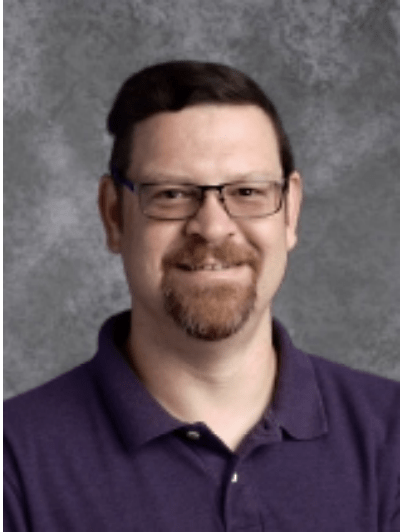
Mr. Joshua McCurley
Hart County Schools, South Hart Elementary School
“Hill or Valley Farming”
STEM Classroom Lesson
Students were asked to observe and study landforms in various Georgia regions then design a scale model farm appropriate for the chosen terrain. Students had to consider how a mountain farm would differ from a flatland farm and cite the farming techniques that would be used in each. The lesson incorporated art for the model’s design and language skills as they presented their work. The lesson emphasized practical thinking, good design principles and exposed students to future career choices in Georgia agriculture.
Impact Initiative
Joshua led his students in a variety of interesting, fun projects that required teamwork, problem-solving skills and a competitive spirit. A willingness to fail, regroup with new solutions was key in the First LEGO League activities and the assembly of robotic devices that would respond to commands. The ability to persist despite setbacks or failure was tested as much as the ability to master technical challenges.
Ms. Joanna Knox
Jefferson City Schools, Jefferson Middle School
“Tornado Alley”
STEM Classroom Lesson
Students were challenged to build a secure structure to withstand tornados. They focused on weather patterns, physics, resource management and remaining within budget. This required teamwork, design consensus and occasional modifications to keep in accordance with civil engineering principles. Students tested their structure for durability and effectiveness and were rewarded with a great outcome that showcased talent, leadership and the capacity to execute a life-saving project with success.
Impact Initiative
Joanna led faculty professional training sessions in preparation for her school’s quest to become STEM certified. Teachers were asked to design lessons that incorporated STEM into diverse subject areas like English language skills, social studies and of course, math and physics. The teachers responded by imagining creative, interdisciplinary scenarios to demonstrate that STEM makes learning authentic and relatable.


Ms. Magen Douglas
Johnson County Schools, Johnson County Middle School
“Wreaths of Leaves”
STEM Classroom Lesson
Students were asked to build a fall wreath using fabric leaf cutouts. They had to present the ratio of each color leaf and create equivalent ratio questions based on the leaf ratios and find the percentages of each color leaf to the whole wreath. This lesson taught proportional reasoning, and deeper understanding of ratios and percentages. The lesson concluded with students donating their finished wreaths to a local nursing home adding values of sharing and caring to lessons learned.
Impact Initiative
Magen’s participation on the district’s Instructional Tech Team led to a variety of improvements to the tech landscape for students, teachers and parents. They included providing each student with an email address, creating paperless lesson plans district wide, increasing parent tech workshops and awareness that increased communication between parents and teachers while allowing parents to observe a Google classroom in real time.
Ms. Kera Davis
Monroe County Schools, Samuel E. Hubbard Elementary School
“Sensory Sensations”
STEM Classroom Lesson
Real world problems were addressed when students sought to reduce the noise levels of practicing band members nearby. The class explored how sound travels indoors vs outside and how sounds could be altered using different constructs and equipment. They wore headphones and gauged the movement of sound with a decibel reader and airhorn. They built a scale model of the band room using Legos and outfitted it with noise reducing wall panels. All students were fully engaged as they found new meaning for the term “quiet time.”
Impact Initiative
The school musical performance offered an opportunity to let younger students learn and operate light and sound equipment for the stage. They studied the script and thought about lighting angles that would create the best atmosphere as they considered the mood and theme of each scene. Fine Arts faculty were consulted and the entire school got to appreciate the light and sound expertise of Kera’s class. On with the show!
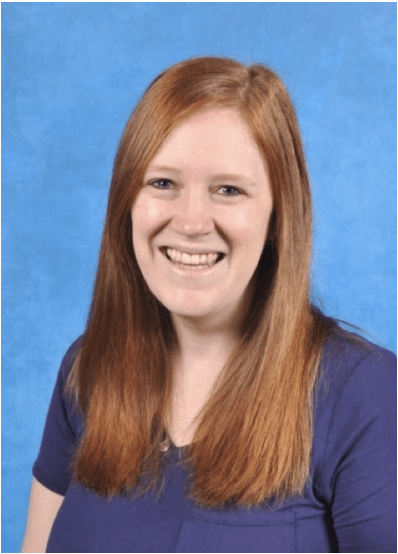
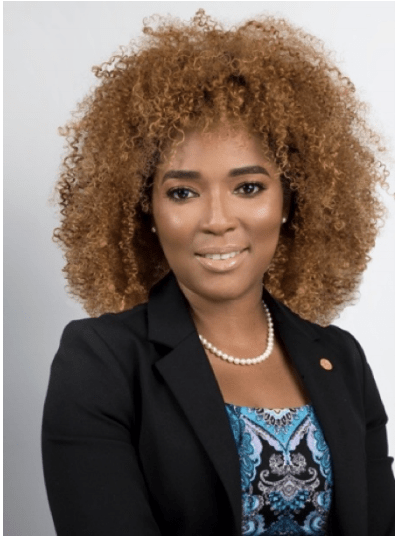
Dr. Kimberlie Harris
Monroe County Schools, Samuel E. Hubbard Elementary School
“In the Wild”
STEM Classroom Lesson
Instilling an appreciation for nature through introduction to endangered animals is effective in generating respect, empathy, responsibility and illustrating the connectedness of all creatures who share our planet. These are some of the lessons learned by students as they studied and devised ways to protect the endangered sturgeon and the Indian Bat species. Student led instruction made the lessons more meaningful as they researched, measured, planned and built protective shelters for the animals.
Impact Initiative
Third grade students created an on-campus bat habitat for the endangered Indian Bat. Although initiated by younger students, the entire school benefitted. Important STEM principles were taught and reinforced as ecology, engineering, soil characteristics and math skills were all in play. The children gained confidence in environmental conservation and in verbal and written communication.
Mr. Brent Sutherland
Muscogee County Schools, Dimon Magnet Academy
“Eco Pond”
STEM Classroom Lesson
I-Pad apps were used to construct an on-campus Eco Pond. Weather and water cycles, food chains and species identification were the focus of learning as the students added goldfish, frogs, crayfish and aquatic plants to the 600 gallon Eco Pond’s lively mix. Reading, writing and arithmetic skills were reinforced for these elementary students while engineering and building design basics were introduced in a fun, hands-on activity that taught young learners the many ways STEM skills factor into daily life.
Impact Initiative
Brent organized Career Day and Truck Day – two activities that invited community STEM professionals to share and display their jobs and the tools they use to perform them. Students and staff were engaged with the presentations which students enjoyed and colleagues praised as models for future activities to illustrate the diversity of careers that involve STEM disciplines.

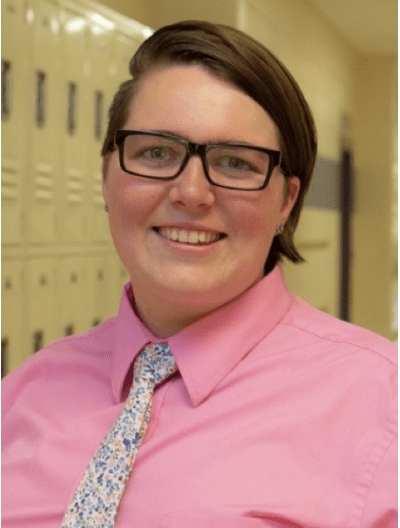
Ms. Chelsea Sell
Paulding County Schools, Irma C. Austin Middle School
“D”
STEM Classroom Lesson
is for Diversity Sink or Swim was the subject of a fun experiment that showed students principles of movement and density. The lesson involved observing the movement of a sheet of aluminum foil as it made its way through a tank of water. Students learned that less surface area causes foil to increase density without changing weight or mass. The lesson had interdisciplinary application for both Earth Science and Math.
Impact Initiative
Chelsea co-sponsored the STEM Club which birthed multiple projects like “STEM for Good” which used new technologies to create sensory objects for Special Needs kids; student exposure on the Maker Bus – a collaboration with Kennesaw State University and a visit to Sweetwater Creek for an immersive earth and life science experience. Students had fun using their math skills to assess skaters’ speed rates during a field trip to a local skating rink while an enormously popular STEM Night at the school hosted over 700 participants who viewed STEM Career presentations.
Ms. LeeAnn Hinchberger
Paulding County Schools, J. A. Dobbins Middle School
“A Novel Approach”
STEM Classroom Lesson
Reading comprehension, overall literacy and science combined for a novel approach to teaching STEM. Students had to read a novel and find solutions for a main character’s problem. Students were given reign and used imaginative devices like creating a catapults to see which design could launch an object the furthest distance. They used green screens and stop gap motion to illustrate their inventions. The lesson allowed experimentation with filming, editing and building skills with a great story line to focus on.
Impact Initiative
STEM Nights were the featured activities with parent /child interaction at the core. Multiple, fun experiments created by teachers, but executed by parents and their children illustrated STEM creativity challenges while generating family fun. Students were eager to showcase their STEM abilities and parents were challenged to match their skills. High attendance was an indicator that STEM Night for parents was well received.
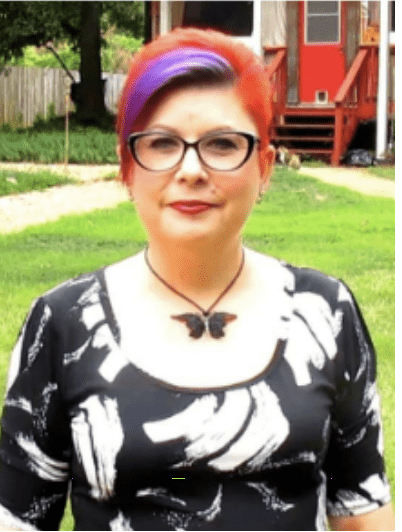

Ms. Inga Cashon
Tattnall County Schools, North Tattnall Middle School
“Space is the Place”
STEM Classroom Lesson
Rockets and the stations that house and propel them into space ignite enthusiasm in middle school students who were challenged to build a model rocket and replicate their own version of an International Space Station. The Engineering and Design Process was followed to execute the designs which resulted in small prototypes that faithfully mimicked the real thing. Students developed a keen eye for detail and were fully engaged as this lesson took off!
Impact Initiative
Students worked with Georgia Southern University faculty to program a robot that would correctly respond to task commands. These BETA and STEM students worked after school to build their robot through the LEGO Mindstorms platform. They readied their robotic project for competition with hopefulness and a robot that works.
Ms. Tammy Sharpe
Thomas County Schools, Thomas County Middle School
“Learning Together”
STEM Classroom Lesson
Students were taught to code a VEXIQ robot using the PLTW curriculum. It was fun, and students were well engaged, but the real lesson adjusted student attitudes of “teacher as oracle” vs “teacher as co-learner.” This important attitude shift shows that learning is an ongoing process no matter one’s age or experience. Further, only through the process of attempt, failure, redesign and retry can success come.
Impact Initiative
Multiple programs kept Tammy busy and had wide impact on all grade levels at her school. She attended a CODE.ORG summer workshop to learn how to facilitate Computer Science Discoveries. She encouraged student participation in Hour of Code annually and Coding Friday to foster more exposure to computer science. A summer robotics camp rounded out the year and taught students that mastering STEM is within their capabilities and is endlessly interesting, worthwhile and fun!
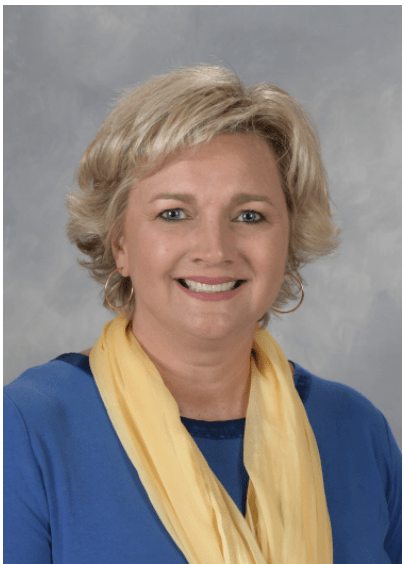
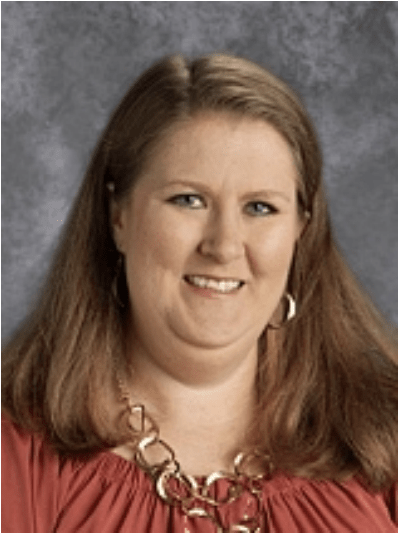
Ms. Monica Hardy
Wilkes County Schools, Washington-Wilkes Elementary School
“Lit and Lovely”
STEM Classroom Lesson
Students created an illuminated cityscape using Christmas light bulbs. They fashioned a street design using simple materials like wire, straw, electrical tape, brass fasteners and batteries. They utilized the Engineering Design Process, worked in groups to learn the importance of staying within budget and an effective plan that incorporated wires, currents, insulators and conductors. They created videos of their work on FlipGrid and enjoyed demonstrating their knowledge in a real life scenario.
Impact Initiative
As STEM Coordinator for the school, Monica worked hard to offer professional learning to 4th and 5th grade teachers. She introduced the Engineering Design Process and discussed ways to integrate it into all subject areas. As a result, students are seeing the connectedness of STEM to different content areas like social studies and language arts.
Ms. Pamela Parten
Worth County Schools, Worth County Middle School
“Storm Warriors”
STEM Classroom Lesson
The severe weather unit was utilized by students after a powerful tornado impacted their community threatening life and causing wide destruction. Students responded by choosing preparedness and safety strategies to protect people and property from the next weather crisis. They created products using classroom supplies or developed and marketed a useful service to aid the public. All recommendations were based on STEM related data collection and other ideas developed by the students. They learned that preparedness has life-saving value to vulnerable communities.
Impact Initiative
A GYSTC STEM Night was one of the first activities Pamela organized after becoming Lead STEM Teacher for her school. The school partnered with faculty from Fort Valley State University 4H to help grow the school garden. Through the aegis of Fort Valley, Bayer Corporation decided to sponsor kits for each student followed by a 4hNational Youth Science Day. The event enjoyed wide participation and enthusiasm.
